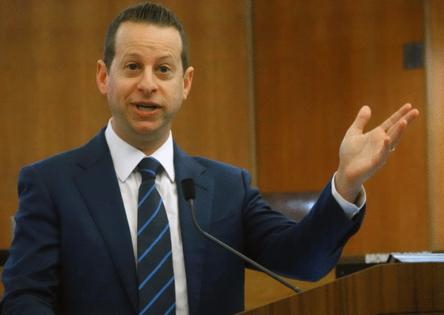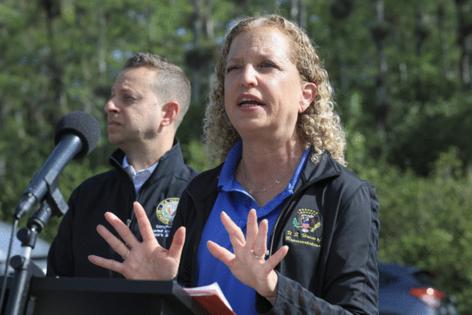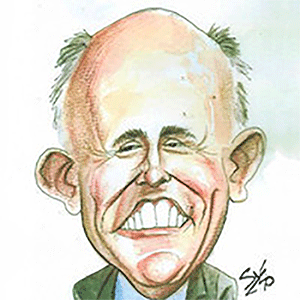Here's how redistricting push may spell trouble for South Florida Democrats
Published in News & Features
FORT LAUDERDALE, Fla. – South Florida is the focus as Gov. Ron DeSantis and state Republicans attempt to deliver on demands from President Donald Trump and his allies that states controlled by his party reconfigure congressional districts in ways to get more Republicans and fewer Democrats elected to Congress.
Redistricting has major implications: It can end the careers of well-known elected officials and determine which party will win congressional races and control Congress — all before a single citizen casts a vote.
Florida’s congressional districts are already crafted to lean Republican. In 2022, when DeSantis was at the peak of his political influence he directed Republican state lawmakers to pass a redistricting plan that helped their party.
Now he’s calling for more changes — and has cited South Florida as a focal point.
Why South Florida?
Making the state’s congressional delegation even more Republican red naturally means focusing on South Florida, because it’s home to five of the state’s eight remaining Democrats in Congress.
Adding Republicans to Democrats’ districts, changing the boundaries so they’re in territory where voters don’t know them, or placing two Democrats in the same district and potentially setting up divisive primaries would all be ways to change the makeup of Florida’s delegation.
The Republican efforts also could make reelection more difficult for U.S. Rep. Debbie Wasserman Schultz of Broward, the senior Democrat in the Florida delegation, and for U.S. Rep. Lois Frankel, the veteran Palm Beach County Democrat.
It could be especially problematic for U.S. Rep. Jared Moskowitz, the Broward-Palm Beach county Democrat serving his second term.
23rd District
National Republicans ignored the 23rd Congressional District in 2022 and 2024, but they’ve made it a target for 2026 as its territory — northern Broward and much of the coast extending south through most of Fort Lauderdale plus a swath of southern Palm Beach County — has rapidly become much more Republican.
And Moskowitz’s two margins of victory were the closest in the state in both elections.
“All eyes are on the 23rd District,” said Daniel Smith, a University of Florida political scientist and nationally recognized redistricting expert.
“It’s going to be Moskowitz without question,” Smith said. “That’s the district that they want to flip if they’re going to get an extra (Republican) seat.”
A redistricting could move more Republican voters into Moskowitz’s district and move some Democrats and no-party affiliation voters who lean Democratic into neighboring districts.
Though a Democrat, Moskowitz had been appointed state emergency management director and to the Broward County Commission by DeSantis, and wasn’t a target of the governor when his staff drafted the current congressional district boundaries in 2022.
The map, which is currently in force, created a relatively favorable, though close, district for Moskowitz.
In an email blast to supporters Friday afternoon, Moskowitz criticized the current Republican efforts.
“Florida Republicans are pushing a mid-decade redistricting scheme before the next election,” he wrote. “Look, Republicans aren’t even pretending anymore. These new GOP maps are built to guarantee themselves more seats, not reflect the people.”
Unusual timing
Redistricting usually happens every 10 years, with borders of districts redrawn to reflect population changes uncovered in the Census. There are sometimes mid-decade redistrictings, including one in Florida in 2015 after the state Supreme Court ruled some districts were improperly drawn.
The current nationwide mid-decade redistricting effort is much bigger.
It began when Trump said he wanted Texas to create five more Republican districts in time for the 2026 midterm elections, along with seats from some other states. Republicans narrowly control the House of Representatives, and the first midterm election after a president is elected is usually bad for the party that controls the White House.
DeSantis has offered a few glimpses into his thinking in recent days — but has avoided stating that the objective of redistricting is to gain more Republicans seats.
In an interview with DeSantis on Tuesday, the Fox News host Sean Hannity — a Republican registered voter in Palm Beach — pressed the governor to come up with the number of seats “Republicans might pick up” in a Florida redistricting.
DeSantis didn’t answer directly, but said “Republicans are going to do much better.”
The governor told Hannity that Florida has “every right to be able to do new districts” and pledged to work with the Legislature “to deliver, I think, you know, really strong maps.”
DeSantis cited two reasons for change: a state Supreme Court ruling last month that upheld the 2022 map his staff crafted and Republican legislators ratified. It eliminated a north Florida district that had previously been crafted to enhance prospects for electing a Black member of Congress.
After the state Supreme Court ruling, DeSantis said “there’s problems with our current congressional map, in terms of violating the Constitution with racial gerrymandering” in South Florida.
And he said Florida’s growing population and people moving within the state are reasons not to wait until after the 2030 Census, when redistricting would normally take place.
State Sen. Shevrin Jones, D-Miami Gardens, said DeSantis’ assertions about his motivations aren’t credible.
“Donald Trump has given orders. And Ron DeSantis being the person that he is, all he is doing is falling in line,” Jones said, terming the effort egregious. “This is the epitome of abuse of power.”
Already Republican
DeSantis, a former member of Congress, is keenly aware of the impact of how congressional boundaries are drawn. In 2022, he vetoed a congressional district plan crafted by the Republican-controlled Legislature and ordered them to pass a plan his office crafted that contained districts more favorable to his party.
That resulted in a congressional delegation with 20 Republicans and eight Democrats.
“Florida’s already highly gerrymandered,” Smith said, so much so he said it could be “tough to squeeze out another Republican seat, much less two,” Smith said.
It’s not just Smith and academic studies with that assessment. It is skewed toward Republicans under a formula used by Hannity in his discussion with DeSantis.
Hannity justified Republican redistricting efforts before the 2026 midterm elections by citing Democratic states where Trump won a higher percentage of the vote than the percentage of Republican members of Congress from those states.
Under the Hannity formula, Florida (where Trump received 56% of the vote in 2024) has too many Republican districts already (71%).
Minority districts
One feature of the 2022 redistricting plan dismantled a north Florida congressional district with boundaries that had been crafted to increase the chances of electing a Black member of Congress.
Under mid-1980s revisions to the federal Voting Rights Act, congressional boundaries have been drawn with a goal of increasing the chance that someone from a minority group can win an election and bring a voice that otherwise wouldn’t be heard to the halls of Congress.
Until those changes were implemented in the 1992 redistricting, Florida hadn’t sent a Black representative to the U.S. House since 1877, when the post-Civil War era of Reconstruction ended.
Fair Districts amendments voters added to the Florida Constitution in 2010 also said boundaries should not be drawn in a way that abridged the opportunity of minority voters to elect representatives.
In July, a 5-1 majority of the Florida Supreme Court upheld the current map that eliminated the north Florida black district. All five of the justices in the majority are DeSantis appointees to the court.
That is a reason DeSantis is citing for redoing the maps that he said are racially gerrymandered in South Florida.
U.S. Rep. Sheila Cherfilus-McCormick represents a district that includes most of the African American and Caribbean American communities in Broward and Palm Beach counties. U.S. Rep. Frederica Wilson represents most of the African American and Caribbean American communities in Miami-Dade County and a sliver of South Broward. Both congresswomen are Democrats.
But there are also three districts, based in Miami-Dade County, represented by Cuban American Republicans: U.S. Reps. Mario Diaz-Balart, dean of the Florida congressional delegation, Carlos Gimenez and Maria Elvira Salazar.
DeSantis, in objecting to South Florida districts drawn with race in mind, didn’t specify which districts he was talking about.
Spokespersons for Diaz-Balart, Cherfilus-McCormick, Wilson and Moskowitz didn’t immediately respond to a request for comment on redistricting and DeSantis’ latest pronouncements on the subject. The subject is followed intensely by members of Congress and their aides, but many don’t comment on the subject publicly.
------------
©2025 South Florida Sun Sentinel. Visit at sun-sentinel.com. Distributed by Tribune Content Agency, LLC.










Comments